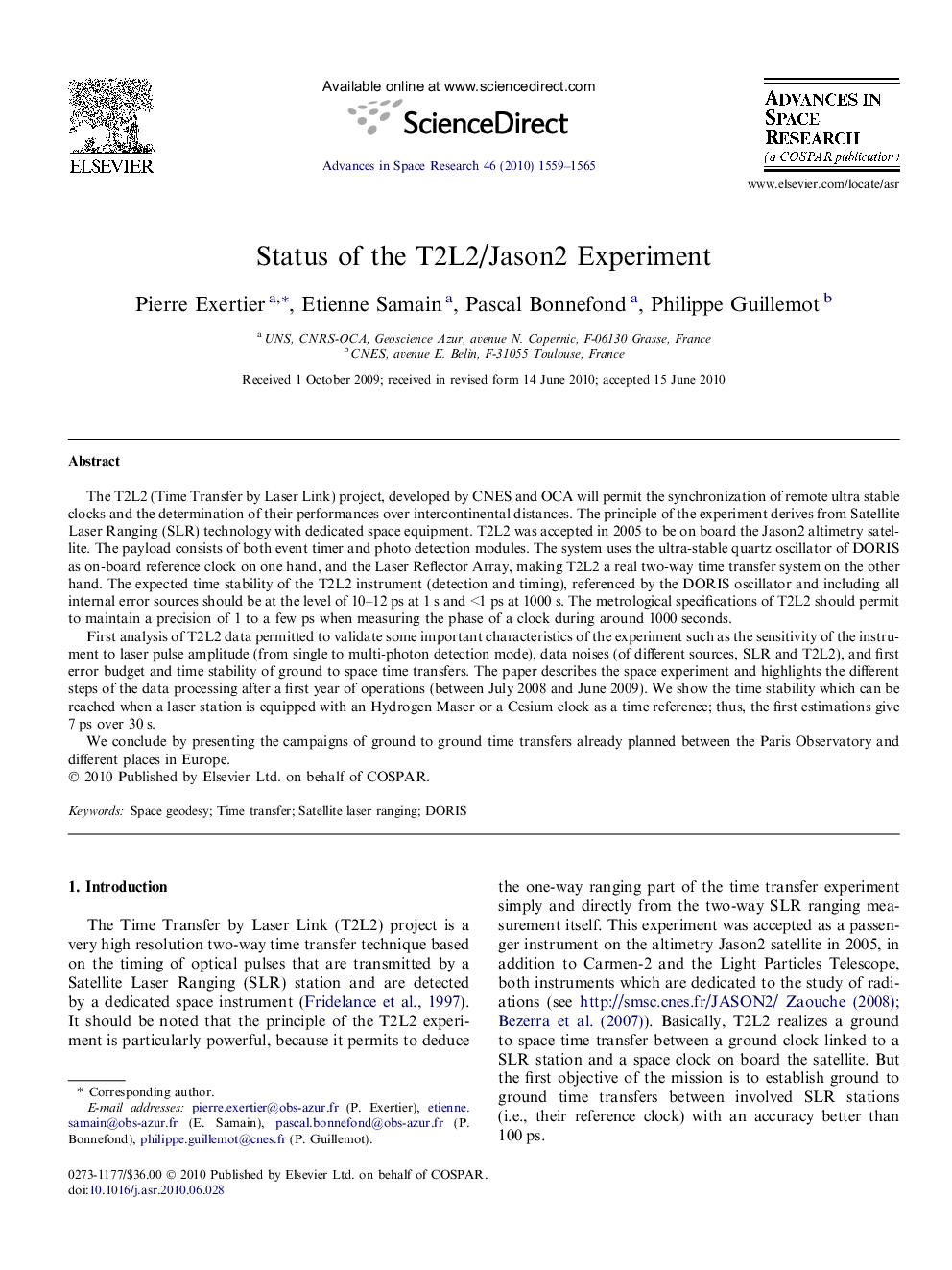| Article ID | Journal | Published Year | Pages | File Type |
|---|---|---|---|---|
| 1765976 | Advances in Space Research | 2010 | 7 Pages |
The T2L2 (Time Transfer by Laser Link) project, developed by CNES and OCA will permit the synchronization of remote ultra stable clocks and the determination of their performances over intercontinental distances. The principle of the experiment derives from Satellite Laser Ranging (SLR) technology with dedicated space equipment. T2L2 was accepted in 2005 to be on board the Jason2 altimetry satellite. The payload consists of both event timer and photo detection modules. The system uses the ultra-stable quartz oscillator of DORIS as on-board reference clock on one hand, and the Laser Reflector Array, making T2L2 a real two-way time transfer system on the other hand. The expected time stability of the T2L2 instrument (detection and timing), referenced by the DORIS oscillator and including all internal error sources should be at the level of 10–12 ps at 1 s and <1 ps at 1000 s. The metrological specifications of T2L2 should permit to maintain a precision of 1 to a few ps when measuring the phase of a clock during around 1000 seconds.First analysis of T2L2 data permitted to validate some important characteristics of the experiment such as the sensitivity of the instrument to laser pulse amplitude (from single to multi-photon detection mode), data noises (of different sources, SLR and T2L2), and first error budget and time stability of ground to space time transfers. The paper describes the space experiment and highlights the different steps of the data processing after a first year of operations (between July 2008 and June 2009). We show the time stability which can be reached when a laser station is equipped with an Hydrogen Maser or a Cesium clock as a time reference; thus, the first estimations give 7 ps over 30 s.We conclude by presenting the campaigns of ground to ground time transfers already planned between the Paris Observatory and different places in Europe.
